Tourists arrive in Rovaniemi and wonder: Where are the Sámis and the reindeer? Well, I can tell, there are a few opportunities to see Sámis and reindeer also in Rovaniemi, but mostly the Finnish Sámis are seen in their own region – in the upper north of Finland where they have lived for centuries. On the map you see the area where the Sámis live in Scandinavia and Russia and they even have their own flag.
. 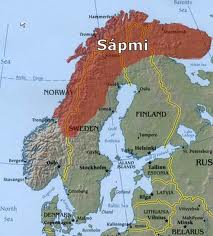
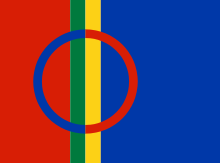
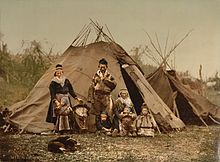
Rovaniemi belongs to Lapland and is even the capital of Lapland but the city seems to be just like any other city most of the time of the year. The sámis turn up in the city on their yearly sámi meeting in January; the Sámi thing. In February there are reindeer races both on the trotting track of Rovaniemi as well as in the middle of the city center. These yearly events are popular for the tourists but also for the local people. At least I have attended these events several times. You are surprised how hard these reindeer really run! In the city of Rovaniemi there is even a police-reindeer, named Artturi. His mother was also a police-reindeer, Maija, but she unfortunately was killed by a car the other year.
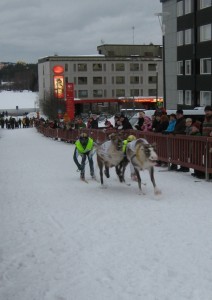


On the Arctic circle in the Santa Claus village you can meet sámis and their reindeer daily during tourist season around Christmas and also admire the beautiful dresses the sámis wear. By paying a small fee you can take a tour with some beautiful reindeer and you can also discuss the herding and the culture with a local sámi. Some years there has been arranged a sámi park also in the city center of Rovaniemi around Christmas.
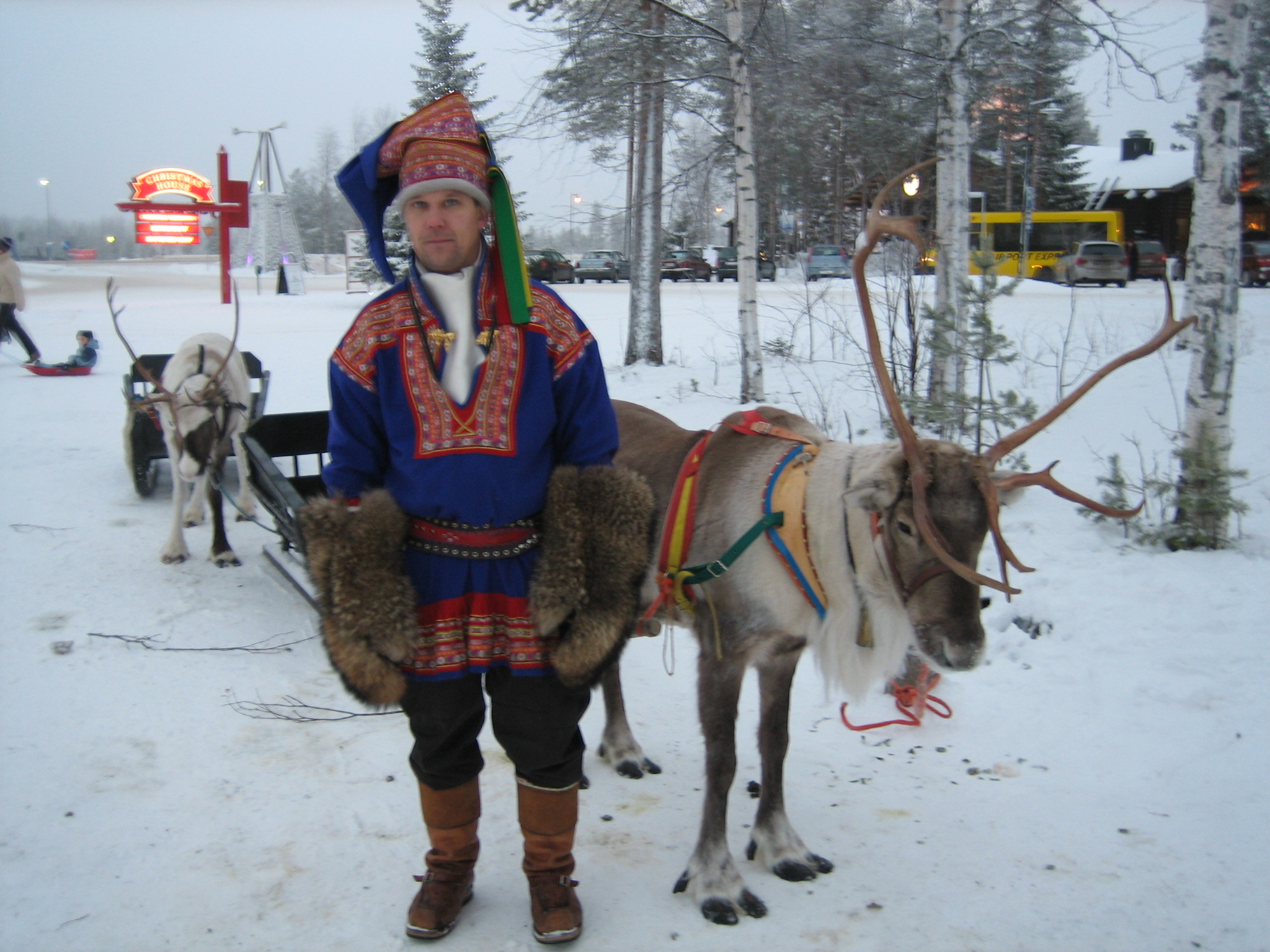
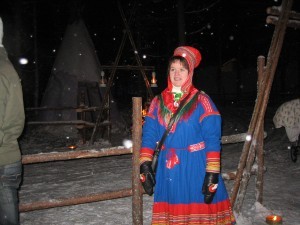
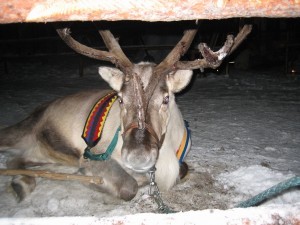
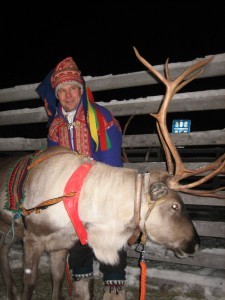

I am really crazy about reindeer. I just love these animals! At every opportunity I get I take photos of reindeer. I have got quite a few during these years. Mostly I see them out near the road, but on the Arctic circle they are so nicely fixed with ornaments and the reindeer brought there are so tame you can even touch them.
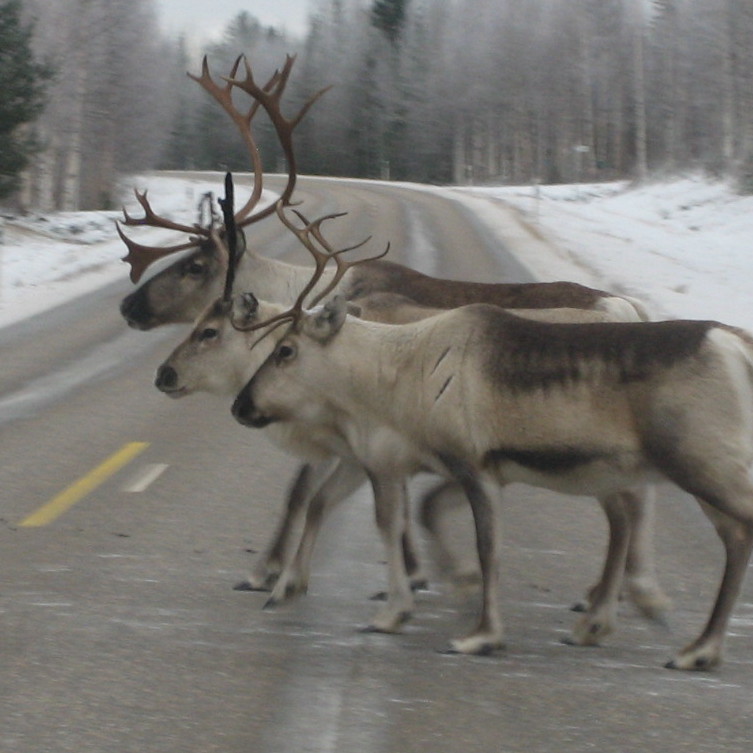
The nicest ornaments on reindeer I saw on a trip once to the sámi area of Russia, Lovozero. We attended a reindeer market where the Russian sámis showed up their beautiful animals and also competed with them on reindeer races.
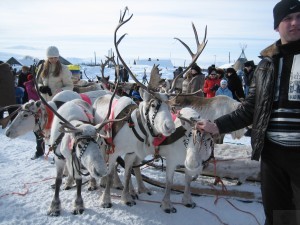
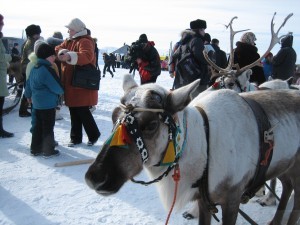
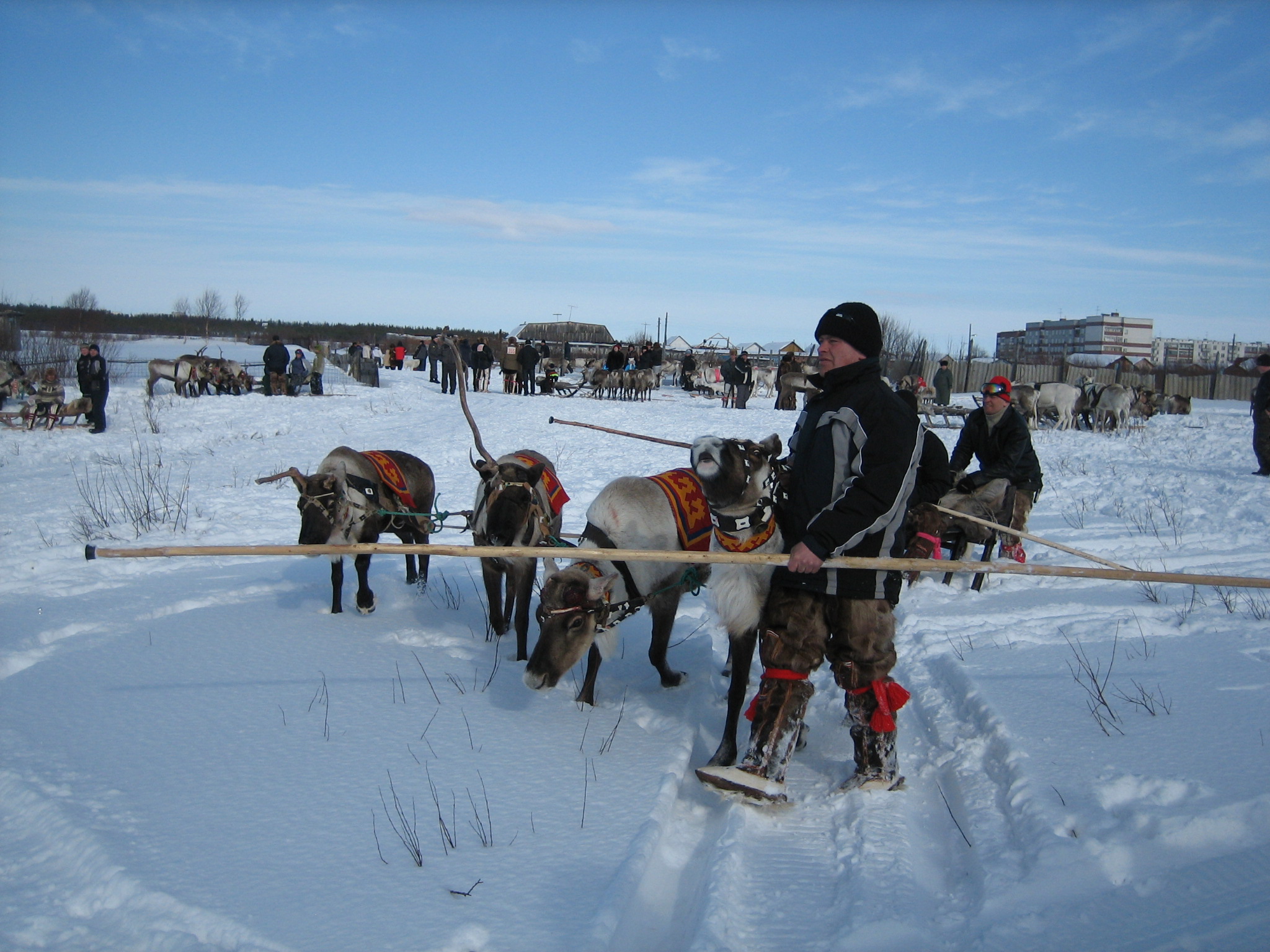
In Rovaniemi, the capital of Lapland, there are also reindeer statues in the parks. 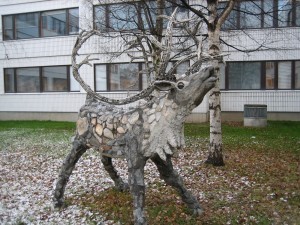
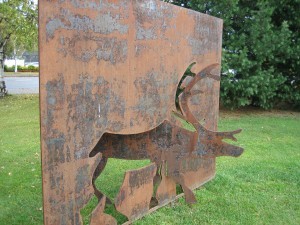
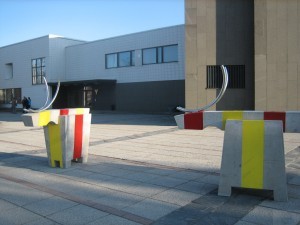
The Sámi people, also spelled Saami, are the indigenous people inhabiting the Arctic area of Sápmi, which today encompasses parts of far northern Sweden, Norway, Finland, the Kola Peninsula of Russia. 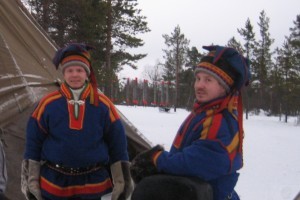 The Sámis are the only indigenous people of Scandinavia recognized and protected under the international conventions of indigenous peoples, and hence the northernmost indigenous people of Europe. Their traditional languages are the Sámi languages and are classified as a branch of the Uralic language family. Traditionally, the Sámis have pursued a variety of livelihoods, including coastal fishing, fur trapping and sheep herding. Their best-known means of livelihood is semi-nomadic reindeer herding, with which about 10% of the Sámi are currently connected and 2,800 actively involved on a full-time basis. For traditional, environmental, cultural and political reasons, reindeer herding is legally reserved only for Sámi people in certain regions of the Nordic countries.
The Sámis are the only indigenous people of Scandinavia recognized and protected under the international conventions of indigenous peoples, and hence the northernmost indigenous people of Europe. Their traditional languages are the Sámi languages and are classified as a branch of the Uralic language family. Traditionally, the Sámis have pursued a variety of livelihoods, including coastal fishing, fur trapping and sheep herding. Their best-known means of livelihood is semi-nomadic reindeer herding, with which about 10% of the Sámi are currently connected and 2,800 actively involved on a full-time basis. For traditional, environmental, cultural and political reasons, reindeer herding is legally reserved only for Sámi people in certain regions of the Nordic countries.
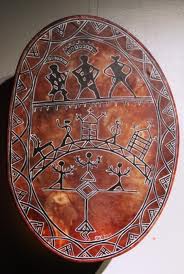 For tourist groups there is arranged meetings with an original sámi shaman. These meetings are surrounded by a lot of secrecy and it is very exciting for the tourists. The shaman sits in his Lappish tepee and by the fireplace he cooks his coffee, hits his drum and starts telling stories to the guests. At the end of the ceremony he makes some marks of soot from the fireplace in the forehead of the guests and tells them they will eventually return to Lapland one day in the shape of a reindeer. That is not a bad destiny, is it?
For tourist groups there is arranged meetings with an original sámi shaman. These meetings are surrounded by a lot of secrecy and it is very exciting for the tourists. The shaman sits in his Lappish tepee and by the fireplace he cooks his coffee, hits his drum and starts telling stories to the guests. At the end of the ceremony he makes some marks of soot from the fireplace in the forehead of the guests and tells them they will eventually return to Lapland one day in the shape of a reindeer. That is not a bad destiny, is it?
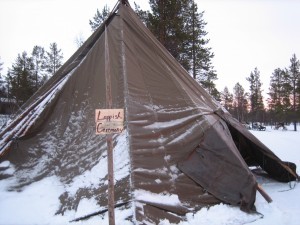
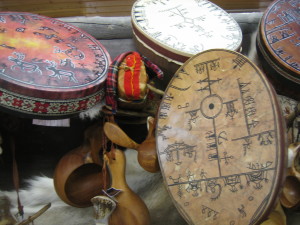


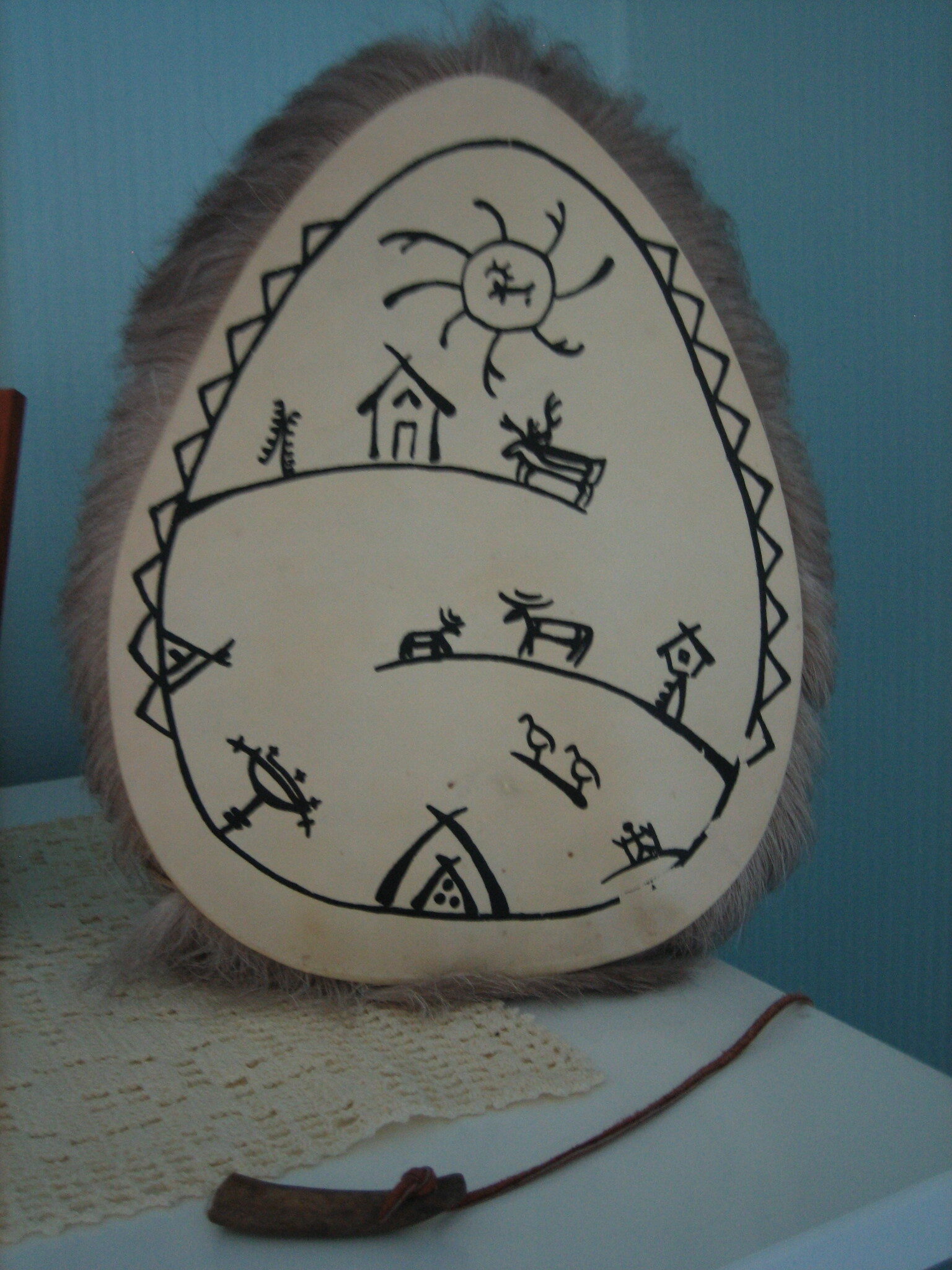
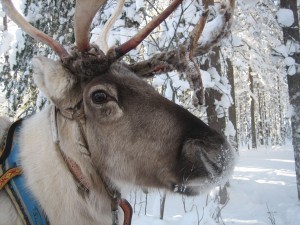
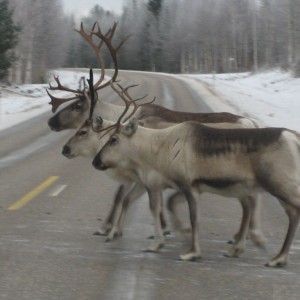
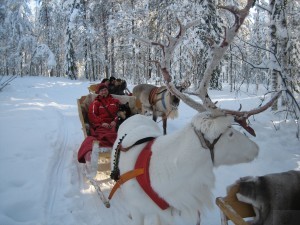
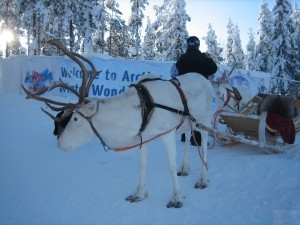
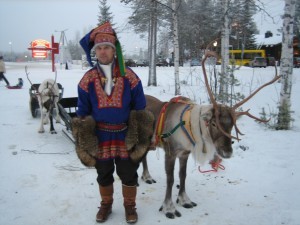

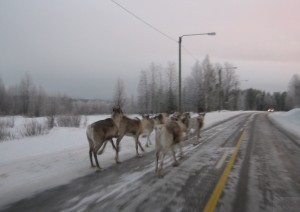
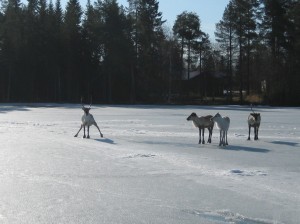
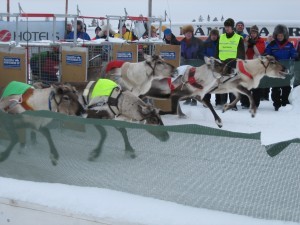
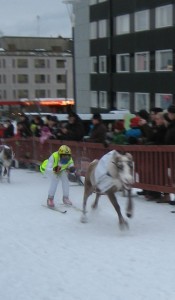

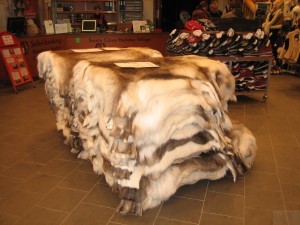
 In Rovaniemi they even have their own
In Rovaniemi they even have their own 



















